Why Is Syria Hell on Earth? Here’s the Ugly but True Answer…
The son of the president was driving way too fast through the early morning fog. He was rushing to the airport to catch a flight to Germany. He missed the exit to the airport. Lost control of his sports car. Smashed it into a barrier. The car flipped numerous times. When it came to a stop, the son of the president was dead. He was 33. His name was Basil al-Assad.
The first son was so beloved by his father that the president was fond of being called Abu Basil, which translates as “Father of Basil.” As heir apparent to his father, Basil’s sudden violent death was a shock to the family, and a stunning blow to the future of the nation and its people. The second son was never intended to be a leader. He was off in London, training to be an eye doctor. But following the death of Abu Basil’s first son, Fate left the younger brother as de facto next-in-line to become president of Syria. You know this man’s name: Bashar al-Assad.
Bashar, who the New York Times called a “shy young doctor” when he took over as president of Syria in July of 2000, quickly transformed from mild-mannered London-based ophthalmologist into the man you know as the genocidal monster of Damascus. A man far more cruel and ghoulish than his father. Bashar’s murderous reign raises a peculiar question: How many hundreds of thousands of Syrian people died because of that one car accident?
If you catch news of the Syrian conflict, it seems like a narrative that’s knotted and frayed, impossible to untangle. However, it’s not, if you pull on the right thread.
When the world learned that the Syrian government––under orders from President Bashar al-Assad––had (allegedly) dropped bombs of sarin gas on its own people, the news reports defied easy understanding. How could any leader do that to his own people? But if you know the story of Syria, this atrocity is sadly quite predictable. It follows a historic pattern.
To understand why Bashar al-Assad exterminates his own people, you must understand how Bashar values the people of Syria. His people. But before they were his people, they belonged to someone else. To understand the son, one must know the father. The story of the Syrian conflict — a tale of staggering losses of human life, death on a scale that avoids comprehension— is a war story that’s not easy to tell. There’s the factions. The history. The layers of conflict. But, if you wish to answer the question: Why is Syria hell on Earth––why have 320,000 innocent human beings been murdered––to answer why such atrocities occur despite history’s warnings, to get at this story properly, one must start with the father of Basil, and Bashar, and the republic of Syria.
His name is: Hafez al-Assad.
Syria is a nation born from an act of European betrayal. It was part of a great betrayal of Arabs by the British and French that traces back to one man, T.E. Lawrence. You may know him from his movie biopic, Lawrence of Arabia.
In the film, Peter O’Toole beautifully pines as he gazes out at those bleak desert landscapes, framed by the genius of David Lean. As the audience, we see how Lawrence, an eccentric Englishman, is sent to an undesirable outpost to aid the Arabs in their fight against the Turks. They’re hopelessly outmatched. But Lawrence inspires them with the promise of freedom in victory. He even fights side-by-side with the Arab rebels he commands in battle. Together, they achieve stunning victories against the Turks. But then, once the Turks are beaten, Lawrence learns that the British government, along with the French, intends to go back on its promise to the Arabs. The land they fought, bled, and died for, will not be theirs; instead, the European powers declared themselves the new imperial overlords of the Middle East. That’s a world class betrayal.
After the smoke cleared, the dust settled, and the blood dried in the killing fields of World War I, there sat the ruins of the Ottoman Empire. The Turkish empire was vast. In order to divide up their prize of the newly-liberated Middle Eastern kingdoms, the British and the French designated two mapmakers––men whose names are written in the history books as cartographers but were essentially imperial bureaucrats––and tasked them with the opportunity to draw new borders across lands and peoples they did not understand. It was called the Sykes-Picot Agreement. A lattice of borders was laid over the Middle East with all the care of a blind tailor. When they were done, the former Turkish-controlled lands of the Ottoman Empire were renamed as new nations. You know them as: Iraq, Iran, Lebanon, Palestine, Jordan, and Syria. (Armenia, was also freed from Turkish domination, but was given to the Russians.)
The new nations were never intended to be independent. They were intended to be colonies for the European powers. Of course the Arab natives of the region weren’t super eager to trade their old Ottoman overlords for new French ones. The people rightfully wanted nations of their own, not puppet governments, ones loyal to a foreign power. They’d fought and died to establish Arab republics. Which is why, in 1925, before the newly-minted State of Syria could celebrate its first birthday, rebel factions began a civil war against the French-mandated Syrian government. The rebellion was led by a man named Sultan Pasha al-Atrash.
The rebel leader Sultan al-Atrash and his followers were from a minority ethnic group in Syria, the Arab Druze people. They lived mostly by the southern border with Palestine. As tribal leaders, al-Atrash’s family had ruled this section of land since the 1870s. When the French replaced the Turks as the foreign power, the Druze refused to accept the new French Mandate. They made war against this so-called State of Syria. They’d just fought the Turks to be free. Why not the French? Plus, the Druze had largely been left out of the new power-sharing agreement between the city-states of Aleppo and Damascus. The revolution led by al-Atrash was immediately popular with other tribes in Syria, it spread like a wildfire of insurrection, lasting for two years. It burned across the countryside. But the Arab rebellion overlooked the obvious fact the French military had a brutal technological advantage. Remember, this is just after World War I.
So, what do you think the French military used to put down the revolts?
Imagine bi-planes flying over population centers packed with Arabs. It was an indiscriminate campaign of death from above. During one campaign the French air force bombed the civilians of Damascus, for 48 straight hours, murdering rebels and civilians alike. Indiscriminately. Which is how, inevitably, al-Atrash’s popular revolt was quashed. All Syrians were punished, guilty and innocent.
But the French took seriously the message of Arab discontent. They promised the Syrian people change. Real Arab leadership. A Syria for Syrians. Oui, Oui!
Their plan was doomed by another tribal oversight. The French largely ignored the third major ethnic group in the Syria, the Alawites, a Shiite Muslim tribal group native to the northern coast, up by the border with Turkey. The tribe had strongly objected to the French Mandate and never officially joined the State of Syria. As a minority ethnic population, just like Sultan al-Atrash and the southern Druze tribe, the Alawites had been left out of the French plans for a power-sharing agreement that saw the city-states of Aleppo and Damascus as the seats of Syrian power.
Quick note, this will pop back up later in our story: the al-Assad family are Alawites. If you’re keeping score, the Alawites are a Shiite ethnic group, or tribe, in a predominantly Sunni Muslim nation. This fun fact from the nation’s founding will forever affect the story of Syria. You may also notice another pattern and theme begin to shape Syrian history. Can you guess what it is?
Here, I’ll give you a hint: bombing civilians.
Fast-forward five years. It’s 1930. For reasons wholly political, a new new nation of Syria is declared. It’s called the Syrian Republic. At this point, Syria is becoming born-again faster than a Mississippi divorcee. And again, the people’s dream of a truly independent Arab-ruled Syria is rejected. Instead, the nation is given a new set of window dressings, put up by the latest version of a puppet French government. (The French are nothing if not stubborn.)
In 1936, there are new talks for a treaty of independence from France. The Syrian Republic––and all its various peoples––will finally be free to found a sovereign Arab nation. Free to set their own course. Free from the domination of foreign rulers. And one year later, in 1937, a free and independent Syria is established. But it’s never fully legalized. The French legislature decides not to ratify the treaty. Which leaves the young nation in limbo. It’s left as an unrecognized nation, about as legit on the world stage as a Disney family fun island.
*record scratch*
By the way, notice something important about the years we’re talking about? There’s an external tension galloping along with Syria’s internal tensions. Remember what else was going on in the world in the late 1930s? If so, you may guess what happens next. That’s right….Boom!
World War II.
When the Nazis march on Paris and take over France in 1940, the occupied government of Vichy France is left in charge of the colonial French-mandated puppet government of Syria. Which means, for a short while, the Syrian Republic is governed by Nazi-occupied France. Essentially, the Nazis. Yet another new foreign power in charge of Syria. But then, the war in the European theater ends in the summer of ‘45, and the restored French government promises to pull out of Syria. The newly-liberated French claim they will finally allow the Arab nation to become a truly free and independent nation, no longer under rule by a foreign power. And, one year later, when the French still haven’t left Syria, new popular uprisings and protests break out.
In May of 1945, the Prime Minister of the Syrian Republic, Faris al-Khoury travels to San Francisco to attend the founding conference for the United Nations. He presents a proposal that outlines why Syria should be granted its freedom from the old League of Nations-approved French Mandate of Syria. Meanwhile, back in Syria, the French Air Force is bombing the country, to convince them to accept restored French rule. On October 24, 1945 the United Nations is born with the ratification of the UN Charter. Syria was a founding member state of the UN. With the establishment of the UN, its predecessor the League of Nations and its agreements such as the French Mandate of Syria are no longer legally binding. Which Syria declares is the perfect opportunity for their independence from their French overlords.
Based on what we know of the story of Syria, so far, how do you think the French responded to the Prime Minister al-Khoury’s pleas to the UN to recognize Syria as a free and independent Arab nation?
You know the answer: violence against innocent Syrians. The French fired artillery into the crowds of protesters. They shut off the electricity in Damascus. Their warplanes continued to indiscriminately bomb civilians.
But after they put down the latest rebellion, the French had a change of mind. Busy rebuilding France after the devastations of World War II, the French had their own headaches and hassles to deal with back home. Constantly putting down insurrections in a colony was becoming too expensive and unpopular. In 1946, the French decide to cut Syria loose. And on April 17, 1946 the last French troops leave Syria. The nation will, finally, be free and independent.
However, yet again, external politics intervene. In 1948, a new nation is born on Syria’s southern border. Its birth will reshape the entire Middle East region. And it spells immediate trouble for Syria. You know that new nation as….Israel.
To the south and west of Damascus is an area called the Golan Heights. It’s down there in the lower left corner of Syria. It was part of the old border with Syria’s southern neighbor Palestine. But when the Arab nation of Palestine was annexed and designated by the United Nations as a Jewish homeland, Syria is drawn into a fresh conflict with its new neighbor, Israel.
In 1948, Syria joined with other Arab nations, who’d vowed to crush Israel. Together they waged all-out war. And together, they lost. Spectacularly. One year after the beginning of the war, in July of 1949, Syria quit fighting their new neighbor. They were the last ones to put down their arms. Their loss against Israel was a crushing humiliation. In fact, it’s such a colossal embarrassment it leads to a coup. The first of many coups, new constitutions, and reformed cabinets. This settles into a pattern––for a decade and a half, Syria is a roiling cauldron of governmental upheaval.
At one point, in 1958, Syria attempts to join with Egypt to create a super-nation, the United Arab Republic. They dream of one giant Arab nation spreading across the Middle East, like a Muslim superpower, a union of federated republics. But, like all dreams, it’s short-lived. In less than three years the United Arab Republic crashes hard on the rocks of reality. In 1961, Syria attempts to become, once again, a newly free and independent nation. They call their new nation the Arab Republic of Syria. Which leads to a new governmental instability. In March of 1963, the Arab Socialist Ba-ath Party takes over Syria in a coup d’état.
Eventually, we arrive at an end to all this tumultuous chaos. Finally, strong Arab leadership comes to Syria. So strong that it ends the cycles of inner turmoil and constant domination by outside nations. Finally, Syria overcomes the push and pull of world events. Out of chaos comes the birth of a new and lasting order. It’s the last and most important coup.
So, who do you think led that coup?
Ten points if you said: Hafez al-Assad. AKA Abu Basil, father of Basil, Bashar, and Syria.
Hafez al-Assad made his first power moves after Syria lost to Israel in a yet another failed war. The year was 1967. Hafez al-Assad was the Minister of Defense for Syria during the Six Days War. As Col. Hafez al-Assad he mostly stayed out of the struggles for power that resulted from the loss to Israel. Of course, Hafez had opinions, but he saw himself as a military man. The sort who takes orders. As the Minister of Defense, there were many in the military who respected him. As did many politicians. His opinions shaped Syrian policy. Which meant, he also had political rivals. His key rival was the Salah Jadid, the President of Syria. After al-Assad discovered an assassination plot against him masterminded by the sitting president, he decided it was time for him to go full gangster, and just take over the whole operation.
In November of 1970, the government under President Jadid convened an Emergency National Congress. It was called to settle down the growing crisis of confidence in his leadership. Feeling threatened by his popular Minister of Defense, President Jadid was eager to sideline Hafez al-Assad. His plan was to use the Emergency National Congress to very publicly remove al-Assad from any and all official government posts he holds. It’s a common move when one fears a coup from the military. All the top leadership of Syria attended the Emergency National Congress. But Hafez al-Assad rolled up like a gangster. One who had his own army. When he arrived at the Emergency National Congress, he ordered his most loyal troops to surround the building.
Inside, the meeting goes down as planned. President Jadid stripped al-Assad of all his official government positions. Thoroughly shamed, the president and his allies feel convinced this public embarrassment will effectively sideline the former Minister of Defense. And if they’re lucky, it might salt the earth for any future political ambitions. How wrong were they? They totally failed to realize who they were dealing with. Hafez motherfucking al-Assad.
Once the Emergency National Congress was concluded, al-Assad declares himself in-charge of Syria, and confidently orders his troops to arrest President Jadid and his key supporters, and anyone who opposes his new leadership. In a very un-democratic move, al-Assad seized control of the whole damn country. His loyal soldiers didn’t even have to fire a single shot.
After Hafez al-Assad’s bloodless coup was a total success. Everyone in Syria gets the message. And they get in line. Finally, there’s some order and stability. It comes in the form of an authoritarian leader. But there is no doubt Hafez al-Assad is the undisputed leader of Syria, a stabilizing force, and would remain so for the next thirty years.
Now, to make things a little more interesting, keep in mind, the al-Assad family are Alawites. Remember they’re the same tribal group that wouldn’t originally partner with the city-states of Aleppo and Damascus way back when the newly-formed French-mandated nation of Syria was first negotiating its various independence deals with France after the end of World War I. That’s how far back these tensions go. Unresolved tensions from World War I. And the religious tension are far older than that. Since al-Assad is a member of the Shia minority group of Alawites, to maintain his tight grip on leadership, as the supreme leader of Syria, he often acted with crushing violence to suppress any uprisings in the Sunni-predominant urban centers, such as Damascus and Aleppo.
When you hear about people living in a Syrian city such as Damascus, Aleppo, or Homs, you might think they’re all the same. They’re all Syrians. You have to keep in mind these are groups of people from different historic ethnic groups. Aleppo and Damascus aren’t just cities in Syria. They were ancient, independent city-states. As Americans, we might think of them as two neighboring cities like Cleveland and Cincinnati. But it’s more like if Cleveland and Cincinnati were once fierce rivals, and then one day, some foreigners with guns and bombs came along, drew a line around them all, called it a border, and said they now live in Ohio. This is important but often overlooked aspect of life in Syrian cities. The cities are ancient rivals.
Right about now you may be wondering, “But wait, where is America in this story? When does the U.S. show up in this tale?”
Atthe end of World War II––much like at the end of World War I––there were two new superpowers, only this time it was America and the Soviet Union. The world entered its post-colonial period. All around the globe, new nations popped into existence. Either through war and revolution, through mandate, or sometimes through royal decree. But for three decades, nations constantly stepped free of the grip of their former colonial rulers. As the countries emerged from European rule, the new nations often had to pick, either, the U.S. or the Soviet Union as their strategic ally. In return, the two competing superpowers used the new nations as sites for their proxy wars. This is how the Middle East became a patchwork of Soviet and U.S.-alliances.
Never one to miss a trick, Hafez al-Assad exploited regional politics and Cold War politics to his benefit. With Soviet weapons, al-Assad turned Syria into a feared and respected Arab republic. One that was a worthy military rival to its southern neighbor, Israel. But that fight would have to wait, because there was a new threat spreading in the Middle East, one that pitted Muslim against Muslim. The militarized political arrangements of the Seventies –– and the hopes for peace in the Middle East, that seemed so near at hand after President Carter, Menachem Begin, and Anwar Sadat struck a peace accord between Egypt and Israel –– drew to a sudden and surprising close at the end of the decade. It was like someone had turned on all the lights in the disco. The culprit was Iran. Iran turned on the lights in the disco. But that’s what you do when your thing is Islamic fundamentalism.
The year was 1978, when a theocratic movement of students and religious clerics united to overthrow the American-backed Shah of Iran, every leader in the Middle East turned their head to watch, wondering if they could be next, as the Ayatollah urged all Muslims to reject Western powers and embrace Islamic fundamentalism, to adopt religious values as the guiding voice for politics in the region. That was a direct challenge to Hafez al-Assad, who was the secular socialist president partnered with the atheist Soviet Union, who was actively at war against Muslims in Afghanistan. Not a good look for an Arab leader when everyone’s talking theocracy. And you know al-Assad will suppress the first signs of rebellion or revolt; if he detected the faintest whiff of protest it would be met with state violence. Because, never forget, al-Assad is an Alawite, which means he is a Shia Muslim who’s the leader of a majority Sunni nation. This is what anyone would call a crisis of leadership. But Hafez al-Assad had seen it coming. Since 1976, he’d been putting down his own Islamist uprising in Syria.
After four years of him waging sectarian violence against the Syrian Sunni fundamentalists, backed by the Muslim Brotherhood in Egypt, the revolts against al-Assad metastasized into full-on assassination attempts. In 1980, there was a nearly successful attempt on al-Assad’s life that did succeed in scaring him into responding with increasingly horrific violence. The embattled president put his brother in charge of a counterinsurgency with one goal: crush the Sunni Islamist revolt.
In 1982, al-Assad ordered the siege of the city of Hama. For 27 days, the Syrian government pummeled the civilians of the city with artillery attacks and waves of aerial bombings. When they finally stopped, the Syrian government had killed 20,000–40,000 thousand of its own citizens. (The number of fatalities depends on whose count you use.) Around the world, the Hama Massacre was widely-criticized, it was a shocking atrocity. But the revolt was put down. The Hama Massacre was one of the most heinous actsan Arab government ever committed against its own people. Does it sound kinda familiar though?
Now, let’s jump forward ten years.
It’s 1991. There’s a war brewing in the Persian Gulf. America led by George Bush the Elder is about to take on Iraq in the First Gulf War.
Can you guess who secular, socialist, Soviet Union-backed, President al-Assad and his Syrian government chose as their ally in the Gulf War?
Just like he did in the Iran-Iraq War in 1980, Hafez al-Assad, leader of the socialist Ba’ath party of Syria, decides to help a foreign power fight and defeat the Ba’ath party of Iraq. He stuns the world and sides with a western power, America, and aids its attacks on a majority Muslim nation.
After the First Gulf War ends, al-Assad is still in power, and now he’s a little less worried about a fundamental Muslim revolution deposing him. The Americans are now the ones to attract their fundamentalists’ anger and incur their violence. But he’s also still feeling a bit unprotected. He was about to lose his biggest ally. That same year, in December of 1991, al-Assad and the rest of the world watched as the Soviet Union dissolved like a sugar cube in the rain.
How could al-Assad negotiate the new political reality and retain power in Syria? His options were limited. He could become an unofficial American ally, like Egypt had done. But the risk there was that it might turn him into a puppet in the eyes of his people, and spell doom for his leadership like it did for the Shah of Iran. What about the Muslim nation to his north, Turkey?
For many readers Turkey’s role in the Middle East may be something of a question mark. Like, what’s the deal with Turkey in the Middle East? Are they part of it, or not? Turkey exists at the physical divide between Europe and Asia. It’s a gateway nation, which makes it’s an impossible country to read. It’s a nation with two faces. It looks one way to Westerners. And quite different to Easterners, like Iran or Russia. And, Turkey looks quite different to the Arab world. The eyes of their culture see further back in history. To Arab eyes Turkey conjures up memories of centuries of domination by the Ottoman Empire that only ended thanks to the bloodshed of World War I. And now, a century later, memories of Turkish domination are not forgotten, or forgiven. To this day, no Arab nation wishes to see the return of a dominant Turkey. Which means, Syria, like all its other Arab neighbors, will always avoid partnering with Turkey.
So, who can a socialist, religiously moderate, secular nation like Syria partner with to help them remain a free and independent country? While also avoiding the ever-present threat of a hostile takeover by the fundamentalist Islamic wave that burns like coals all across the Middle East, always ready to flare up and start a new bonfire of resistance?
To buy himself time, all throughout the Nineties, al-Assad plays diplomacy games with the West. He makes overtures that much like Egypt did, Syria will make peace with Israel. He works high level political calculus,and all the while al-Assad drags his feet through round after round of international negotiations and discussions about the planned peace deal and new treaty with Israel. President Clinton and the West especially want al-Assad’s help and stamp of approval on an Israel-Palestine solution. America thinks there can one day be peace in the Middle East. This idea al-Assad dangles like bait before the West, but he never formally confirms anything. He plays the West.
Just as he has done for decades in his dealings with the West, al-Assad employs stalling tactics in his negotiations, and soon enough, he finds he has a new ally. One that’s perfectly suited to keep the West from strong-arming him, and protect him from losing power to the Islamist fundamentalist. His new ally was an old friend.
From the ashes of the Soviet Union, had emerged a new nation, one weaker than before, but bound together by a ruthless form of gangster-capitalism. They call the new nation the Russian Federation. Thanks to the fact they’re natural and historic allies, Syria partnered with the new Russia. This move kept regional powers like Iran in check. It also kept the regional powers like Saudi Arabia and Egypt, who are both majority Sunni populations, along with the gulf states of Abu Dhabi, Qatar, and Dubai, from dominating the region with the backing of the Americans. And remember, the Americans are, for the most part, just an update on the former colonial powers, the British and the French. Which, like the Turks, no Arab nation wants as their foreign ruler. Plus, by partnering with Russia, it makes arch-rivals Israel, and Turkey, think twice about ever messing with Syria. On the geopolitical chessboard it’s a brilliant move to make. It’s exactly what you expect from a political gangster genius like Hafez al-Assad: wait for the world to change.
Over the last 100 years, since, roughly, 1920, Syria has partnered with the French, the Nazi-occupied French government, the British, the Americans, the Egyptians, the Iranians, the Soviets, and most recently, the Russians. For a hundred years, they’ve struggled to be a free and independent nation that sets its own destiny. To do that, they’ve had to play global politics. Which means they’ve played the dark and dirty games of the region, riding waves of violence as they ceaselessly ebbed and flowed, ever since the Ottoman Empire crumbled at the end of World War I.
As a nation, Syria began as two dominant city-states, Damascus and Aleppo, grouped together with a number of various ethnic tribes, most notably, the two tribal states, the Alawites in the north, and the Druze in the south, all forced together by foreign map-makers and their colonial bosses. The one man to hold power in Syria, supreme leader Hafez al-Assad, from the Alawite minority, is a strongman who always felt the only way for him to hold onto power in a majority-Sunni nation, with majority-Sunni nations for neighbors, was to periodically wage indescribable acts of violence against the citizens of his own nation. To defeat outsiders he chose to kill Syrians. At this point, you could cynically call it a family tradition.
To understand why, in 2017, President Bashar al-Assad gassed his own people, and has bombed the city of Aleppo into a post-apocalyptic wasteland, you need look no further than his father. That’s his blueprint.
First, the people living in the city-state of Aleppo are not al-Assad’s people. Bashar may be the leader of Syria, but his people, his father’s people, are the Alawite tribe from the north. The people in Aleppo are Sunnis. To Bashar, he’s killing enemies, not his people. The Syrian revolution began in 2011. One of the first and largest anti-Assad protests was in the city of Hama. Bashar responded with tanks. By the time his men were done suppressing the protest, they’d killed two hundred civilians. It was called the Siege of Hama. Which mirrors his father’s Hama Massacre. This is just what the family does to hold power.
Secondly, President Bashar al-Assad is and will always be battling against the same fundamentalist Muslims his dad had to quash. In one form or another, they’re the same ones that have been trying to overthrow the Syrian government since the mid-Seventies. That’s commitment. The Muslim Brotherhood and its allies would still love to see a fundamentalist Sunni leadership in Syria. The Iran Revolutionary Guard would also love to see a fundamentalist Muslim leadership in Syria, only difference is they’d prefer it be led by Shia Muslims, not Sunnis like the Muslim Brotherhood. And, of course, there’s ISIS. Each fundamental Islamist group imagines it differently, but they share the same general goal: religious revolution. Bashar al-Assad firmly believes the only thing holding back these various flavors of Muslim fundamentalism is the constant reminder of the pain of death.
Thirdly: There’s Russia. Vladimir Putin enjoys fulfilling the role of the former Western colonial powers. For one, it’s lucrative for Russia to sell weapons and arms to Syria. The Syrian conflict also gives Russia a place to run military exercises. It’s a powerful means for Putin to project dominance on the world stage. And, most importantly, Syria is an arena for Russia to challenge the presumption that the old colonial powers––the British and the French, and the new ones, the Americans, who back the Saudi Arabians and the gulf states––are the real power in the region. Putin doesn’t agree with that assumption. The Syrian civil war is a monkey wrench the Russians can throw into Arab regional relations, and into world politics. Bashar al-Assad learned from his dad this global game-playing amongst the world powers is how one retains power in Syria. You leverage outsider power to control your own people.
Syria is not a free and independent nation. It has yet to achieve that goal. And the people pay for that failure. Millions of innocent people, unfortunate to have been born in Syria, must live in the murderous intersection of tribalism, religious and sectarian divides, proxy warfare by foreign powers, and wartime capitalism. Their lives are unfairly marred by the original sins of Turkish and subsequent European colonialism. Their supreme leader, President Bashar al-Assad, is just the latest symptom of a devastating disease. He’s playing a role not written for him, and thus he does the only thing he knows works: be as vicious and cunning as dear ol’ daddy, Hafez.
History doesn’t repeat, but it does rhyme. This may be why Syria remains a bloody cluster-fuck. There’s no end in sight because no one is working on the sources of the tensions. Instead, well-meaning outsiders are overwhelmed by the endless cycles of violence, even if they’re occasionally motivated into action by the pitiful looks on the faces of helpless children. The people doomed to live in Syria lack the ability to overcome all of these various forces working against them. Survival is their best hope. Hell, they just tried to wage a revolution for their freedom from tyranny. You see where that got them. The last 7 years have been the government’s answer. Plus, it’s not like America’s going to do any serious and committed nation-building guided by the tiny hands of Donald Trump and his under-staffed and under-funded State Department. And, the Russians? Well, we all know they aren’t known for spreading democracy. There is no peaceful escape for the people from the murderous reign of Bashar al-Assad.
The only person who’s successfully held power in Syria was a socialist gangster military mastermind from an ethnic minority. Who do you think the eye doctor son who accidentally became president after his older brother died in a car crash is going to emulate? The story of his father, Hafez, sheds light on an ugly truth: for the foreseeable future, with Russia’s backing, Bashar will guarantee that Syria remains bloody as a slaughterhouse killing floor.
How many hundreds of thousands of lives were lost because of that one car accident? Big brother Basil may not have been a better president, but it’s difficult to picture he would’ve been more monstrous than his little brother Bashar. But, who knows? Basil may have tried to surpass his father’s cruelty, and he may have exceeded Bashar’s civilian-killing ways. That’s not the best question to ask. The only good and important question to ask is:
What can possibly save the people of Syria from this endless cycle of violence that’s as predictable as the sweep of the arms of a murderous clock?
In other words, when will Syria finally be a free and independent nation? Right now, America and Russia continue to bomb hospitals in Syria, as they try to defeat ISIS. Meanwhile, the Russians aim to keep Bashar al-Assad in power, while the Americans give aid to the rebels looking to depose him, the same rebels that are aligned with the latest fundamentalist Sunni Islamists, ones you know best as…Al Qaeda. That’s right. In Syria, America is uneasy partners with Al Qaeda. That’s Syria.
And that’s been Syria for the last 100 years. That’s why refugees are desperate to leave, the same ones President Trump has banned from entering the U.S. The same refugees that drown in the Mediterranean, desperate to reach Europe. The West drew the imaginary lines in the sand that created Syria. That original betrayal of Arabs by the West is the reason why Syria became hell on Earth. It’s easy to ignore the truth of that statement if you blame Bashar and Hafez al-Assad for the bloodshed we see in the news.
But now you know…that’s not the real story.
The real story is far uglier.

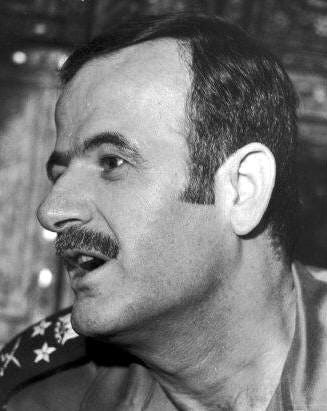
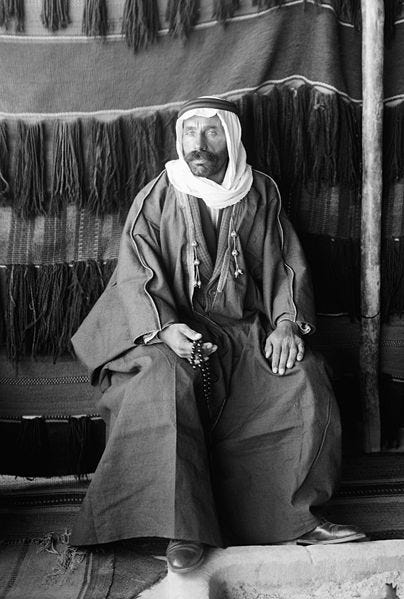
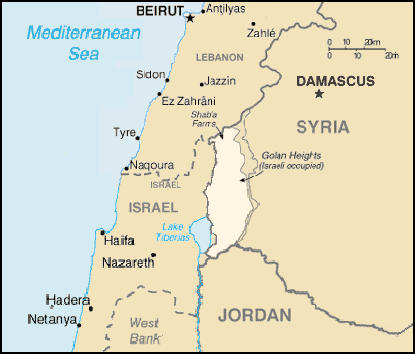
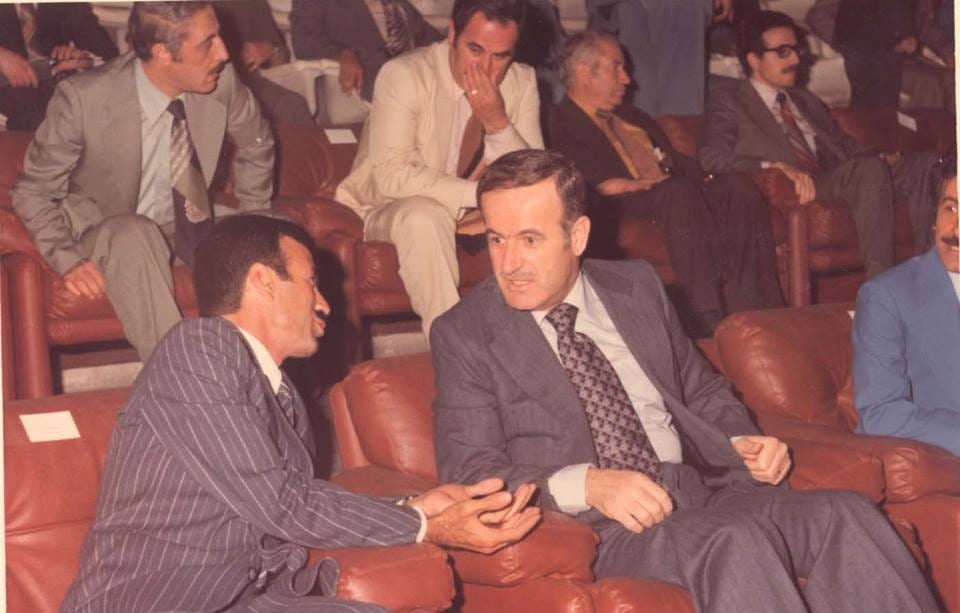
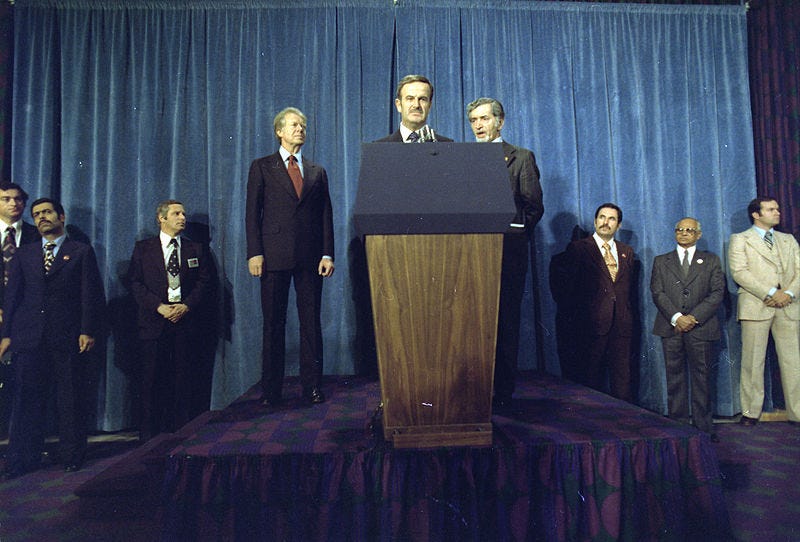
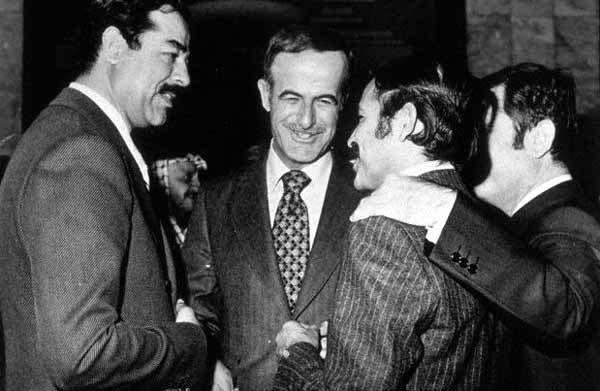


No comments:
Post a Comment